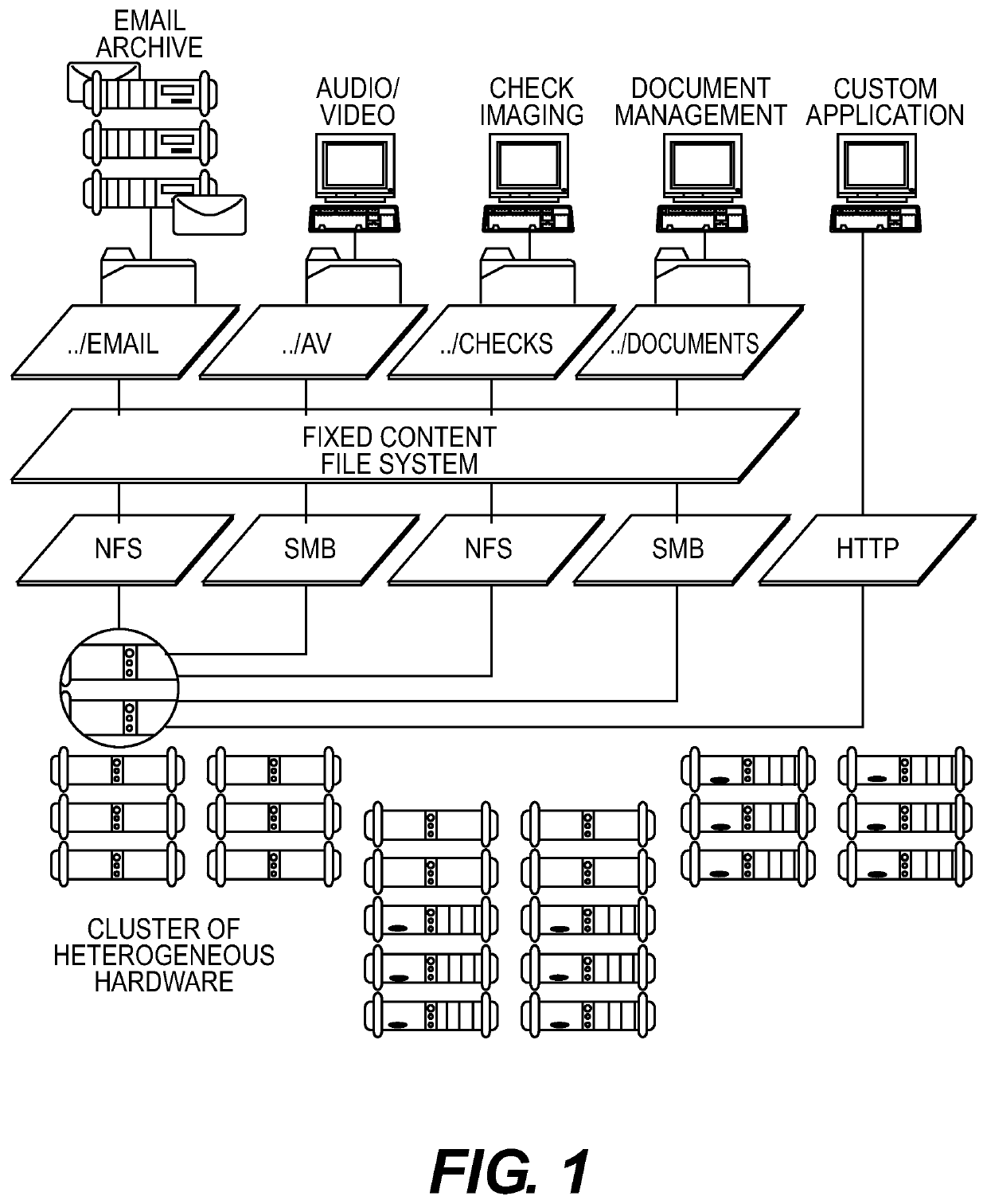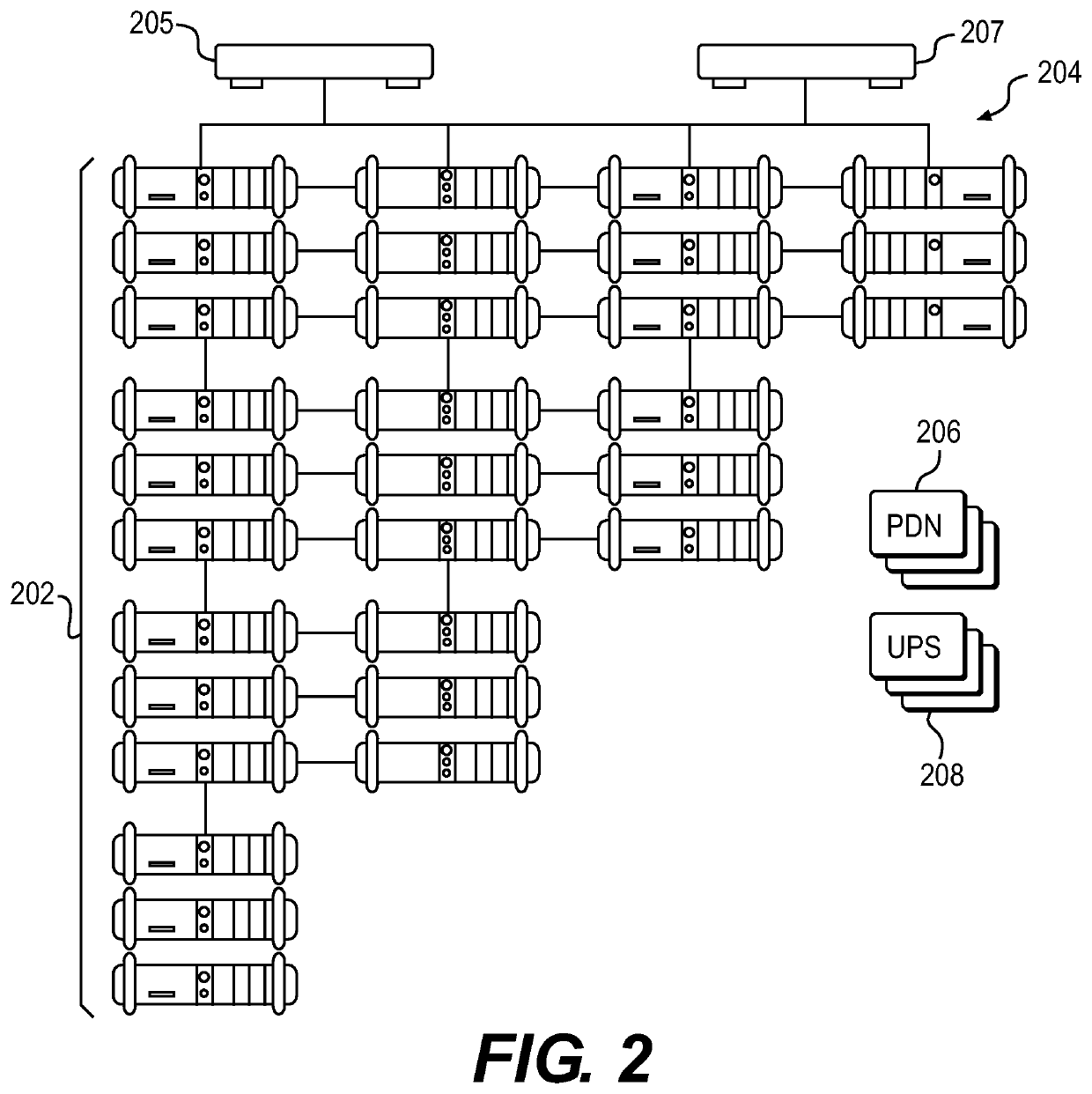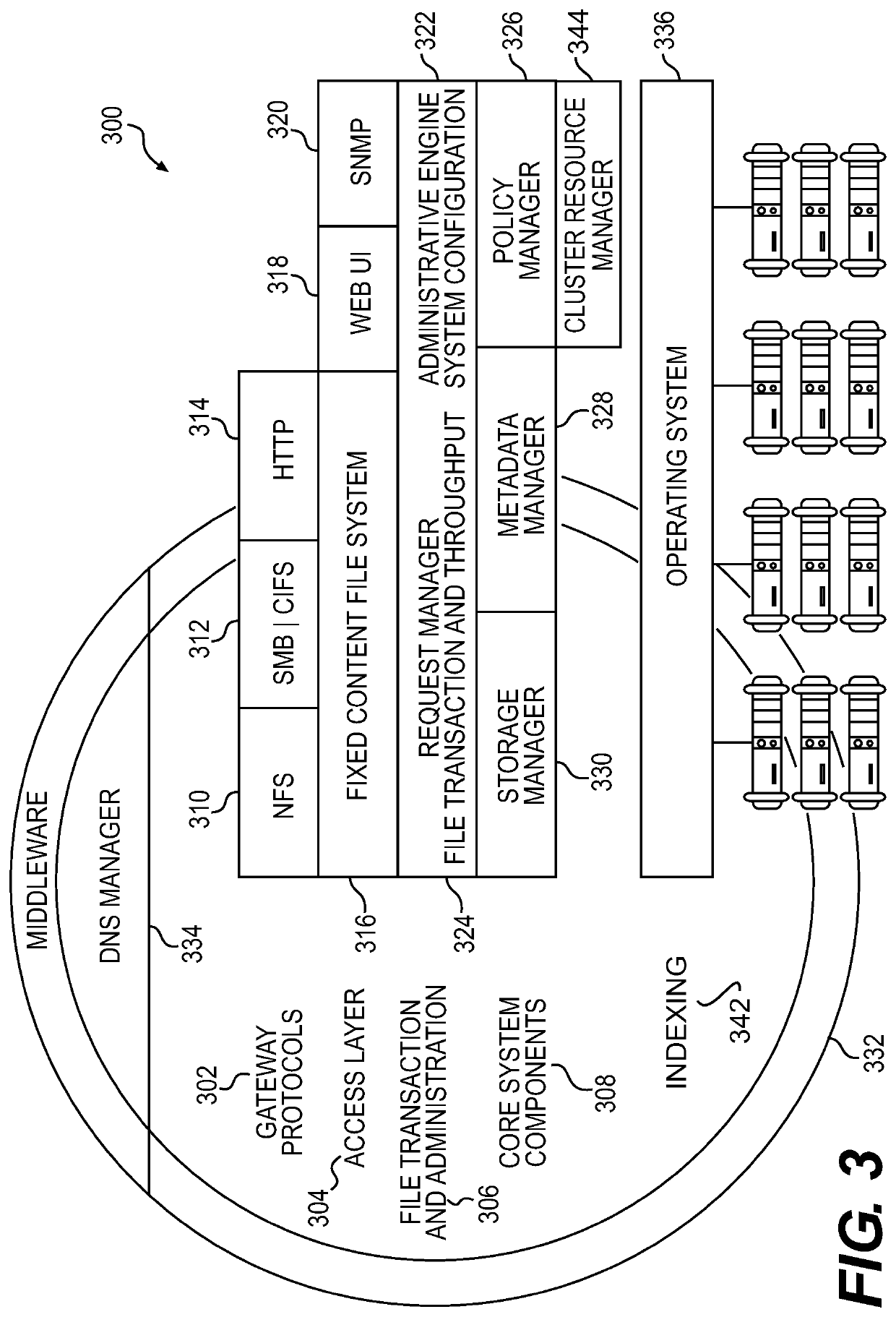Decoupled content and metadata in a distributed object storage ecosystem
a distributed object and storage ecosystem technology, applied in the field of storage systems, can solve the problems of increasing the difficulty of managing and locating relevant digital content, increasing the complexity of the replication topology required to provide local reference for all digital content, and applying the same storage rules to both data and metadata. to achieve the effect of better capacity utilization
- Summary
- Abstract
- Description
- Claims
- Application Information
AI Technical Summary
Benefits of technology
Problems solved by technology
Method used
Image
Examples
case 1
[0113] Metadata Only Objects With Data Sharing in Replicated Environment
[0114]Data storage and retrieval systems are used heavily in environments with various replication topologies. This implementation will allow the Data Protection Level (DPL) requested by the user for the data portion of the object to be maintained over the total replication topology and not per each system involved. This will provide the same data availability and security for each system but substantial savings in storage utilization for the whole replication topology.
[0115]The object lifecycle begins as usual. The user will store data on the system and create whatever metadata is needed and frequently used. The system will queue the object for replication according to rules defined for the object. Since the object possesses new intelligence regarding which part is needed on the other end of the replication link, only this part is going to be sent to the replica. If the replica system is defined as Metadata Onl...
case 2
[0116] Storage Tier Is Defined As An NFS Share
[0117]The object lifecycle begins when the object is stored in the system. Then the user could create some metadata that the user needs and uses regularly. After the metadata is created, the object data becomes redundant since the user is interested in metadata only.
[0118]If the system administrator allows migration of data portion of the object to the NFS share, the system will move the data part off the content platform (e.g., HCP) low latency hardware to the cheaper NFS share with higher latency. This will allow for better utilization of costly and valuable storage without affecting the user experience or data protection and security. The user will continue to have access to the object metadata at the same speed. If the user needs the data portion of the object, the system will retrieve it and service the request with slight delay but the process will be completely transparent to the user. The same Data Protection Level (DPL) level an...
PUM
 Login to View More
Login to View More Abstract
Description
Claims
Application Information
 Login to View More
Login to View More - R&D
- Intellectual Property
- Life Sciences
- Materials
- Tech Scout
- Unparalleled Data Quality
- Higher Quality Content
- 60% Fewer Hallucinations
Browse by: Latest US Patents, China's latest patents, Technical Efficacy Thesaurus, Application Domain, Technology Topic, Popular Technical Reports.
© 2025 PatSnap. All rights reserved.Legal|Privacy policy|Modern Slavery Act Transparency Statement|Sitemap|About US| Contact US: help@patsnap.com



